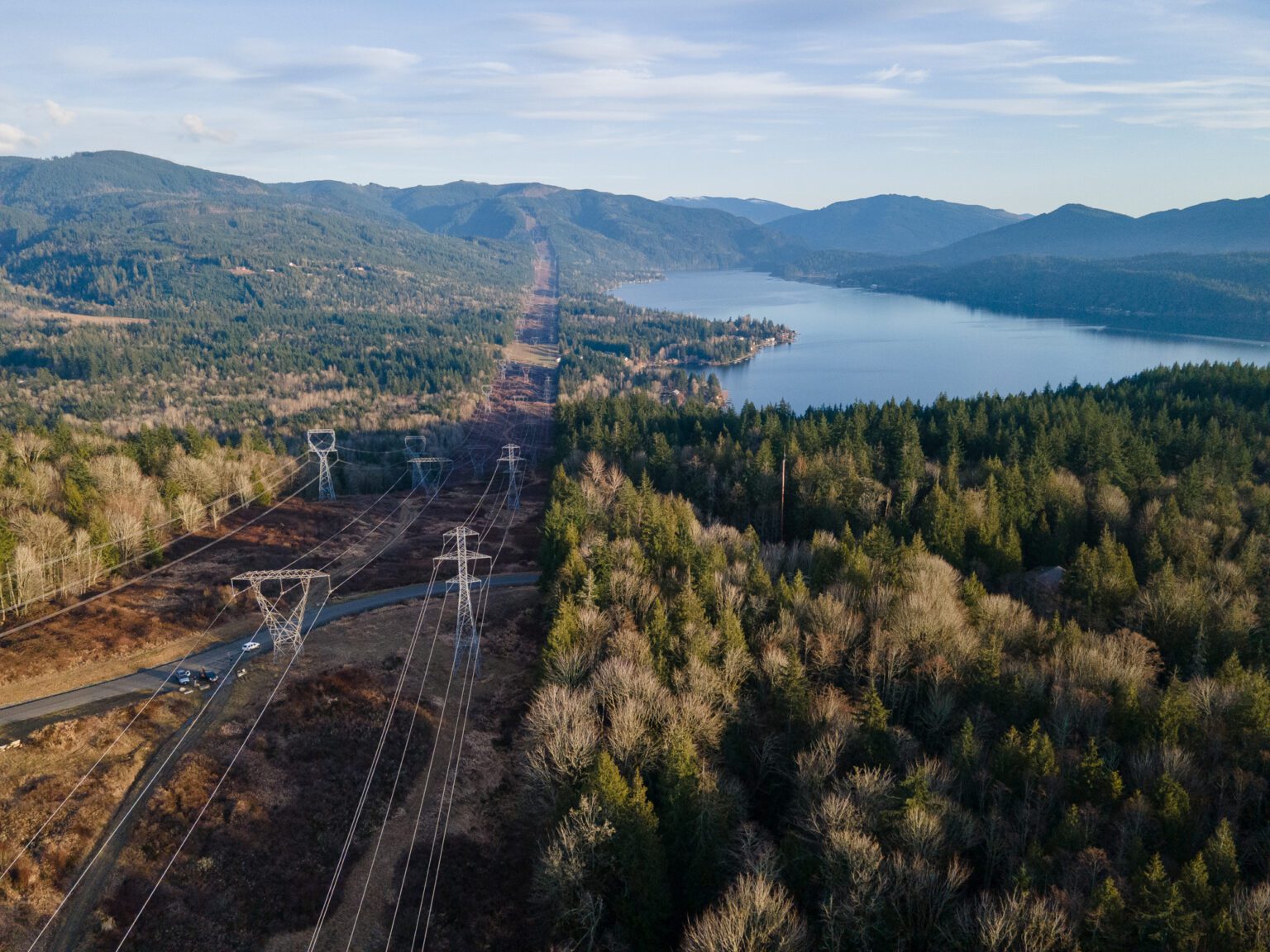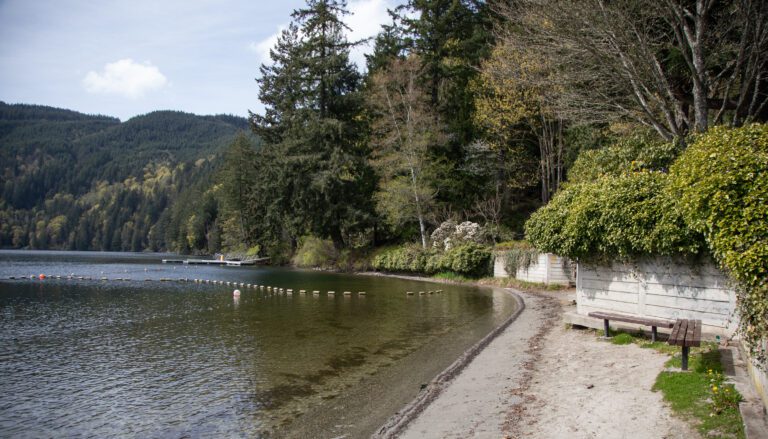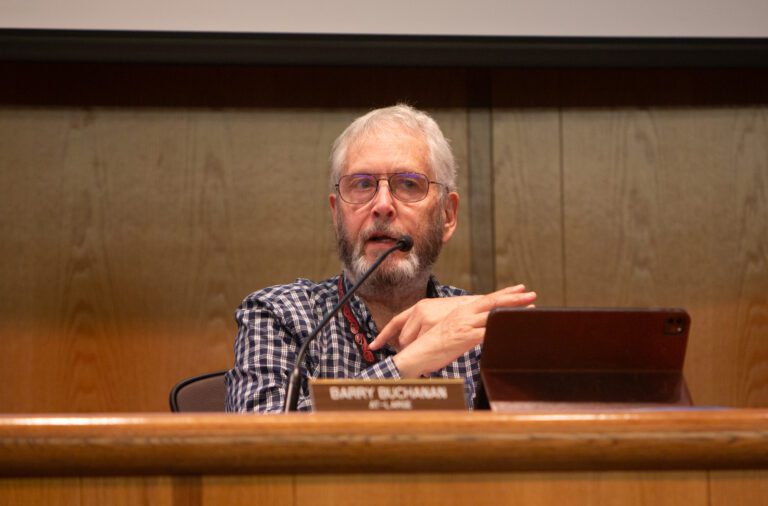Three emergency lights filled the darkness in Sheryl Russell’s condominium as 32 mph winds whipped through downtown Bellingham on Jan. 11 — one of the coldest nights of the year.
People in the residential building checked on elderly neighbors, texted each other and took turns calling Puget Sound Energy to see when electricity could be restored. Until then, they would be without light and heat.
Russell was among about 4,300 Whatcom County residents, including 150 on Lummi Island, impacted by the sweeping outages. Those who had access to natural gas or wood stoves stayed warm. Those who relied on electricity for their heat hunkered down and waited.
Many customers, including Russell, saw power restored within hours, but some were without power until 9:25 p.m. the next day. A cold blast of Arctic air continued to overrun the county, straining — and in some places breaking — Whatcom County’s power grid.
For many, blackouts during the cold snap — along with pleas from power suppliers to conserve electricity and natural gas — was a wake-up call about something that is often taken for granted. Northwest Washington’s power grid faces increased challenges: from increased reliance on intermittent energy sources, to extreme weather, wildfires and even direct human attacks.
These issues compound the underlying pressure of expanding demand on the system as rapidly growing Western Washington moves aggressively toward decarbonizing the energy sector by electrifying transportation, heating and even home cooking.
“Our grid is maxed out right now nationally, and that’s true at almost every regional level,” said Chris Heimgartner, the general manager of Public Utility District No. 1 of Whatcom County. “In order to really get deeply decarbonized, we are going to have to go absolutely crazy building transmission.”
Doing so is likely to be challenging, given people’s propensity to fight large scale energy development — such as the Horse Heaven Hills Wind Farm south of the Tri-Cities — in their backyards and favored areas.

Today’s power grid — what keeps the lights on, what keeps cell phones charged, what makes the modern world run — at its most fundamental level can fail at three points: power generation, power transmission and power distribution.
Multiple Whatcom outages on Jan. 11 and 12 were caused by trees and other vegetation falling on power lines — almost entirely distribution. Early the next day, Jackson Prairie Underground Natural Gas Storage Facility in Lewis County, which supplies natural gas-generated energy to PSE and other utilities in the West, suffered a complete outage due to equipment failure.
By that afternoon, the facility was producing about 50–70% of its capacity, according to Gerald Tracy, a spokesperson for PSE. Nonetheless, the utility asked customers to conserve power through the evening.
“Due to the extreme cold temperatures facing our area, regional utilities are experiencing higher energy use than forecasted, and we need to reduce strain on the grid,” stated a message from the company to users.
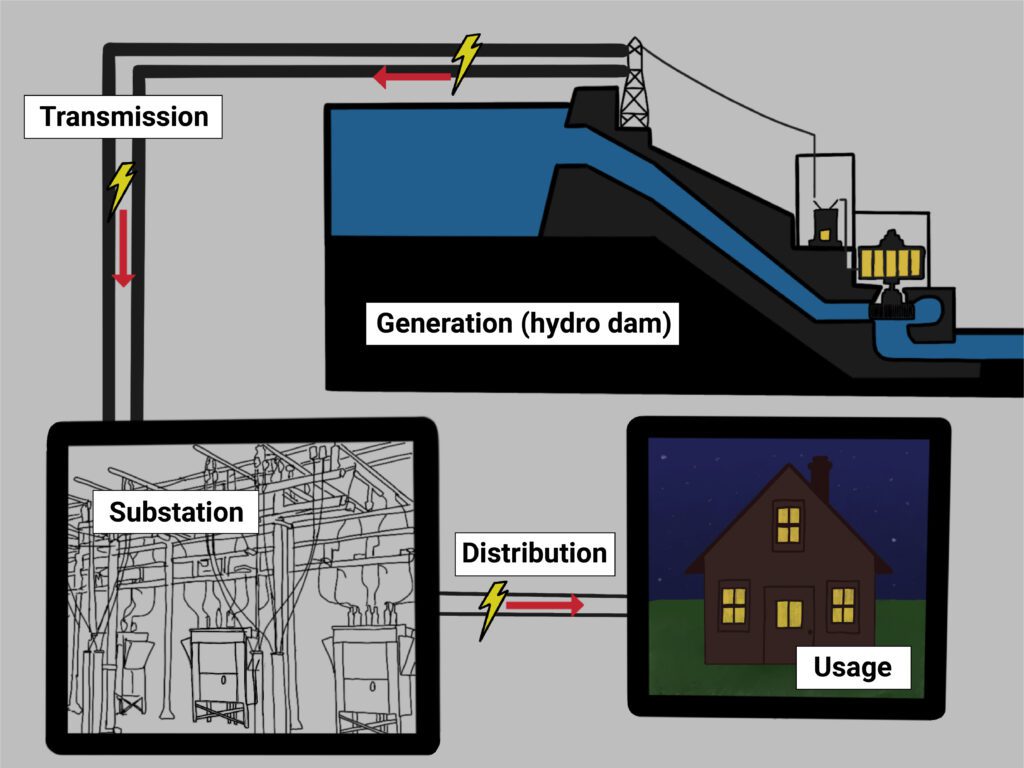
Washington connects to Western power grid
Washington is part of the Western Interconnection power grid — one of three major grids in the U.S. It provides electricity to about 80 million people in 14 Western states, as well as the Canadian provinces of British Columbia and Alberta, and parts of Mexico.
More than 12,500 utility-scale power plants generate electricity as part of the U.S. system, 133 of them in Washington. Grand Coulee hydro plant in Eastern Washington is the largest producer of electricity in the Western system — as well as the entire country — followed by Palo Verde nuclear plant in Arizona.
“We're all interconnected into one big grid,” said Jeff Dagle, a chief electrical engineer at Pacific Northwest National Laboratory.
As of 2020, the majority of energy in the system was created at natural gas plants (38%), followed by hydropower (25%), wind (11%), coal (10%) and solar (8%).
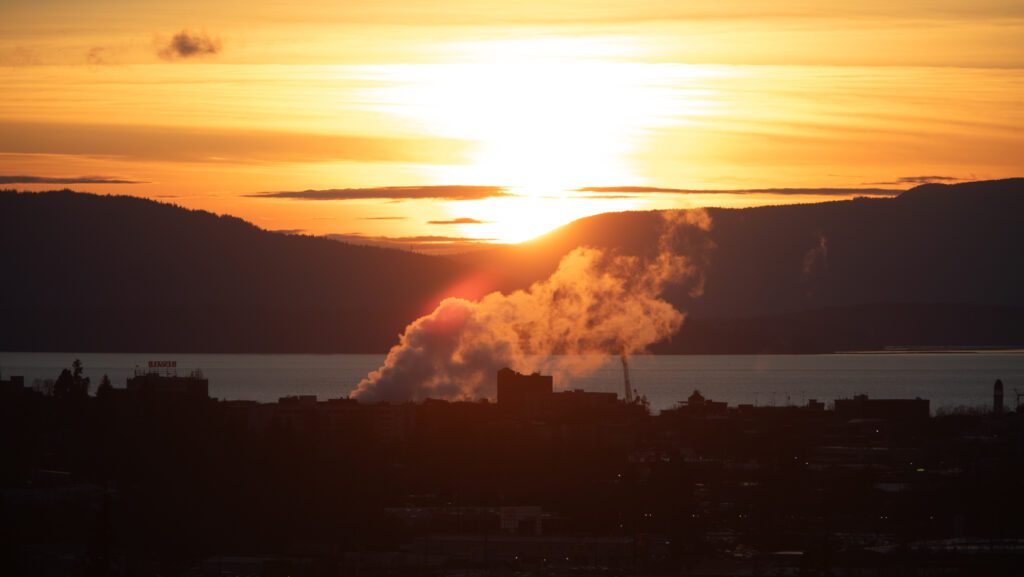
These power plants are tied together by more than 136,000 miles of high-voltage power lines that make up the Western Interconnection.
This high-voltage power — sold on various markets from annual contracts down to 15-minute increments — is stepped down, reducing the voltage, at a substation and then distributed through a community where it can be used in homes and businesses.
One analogy for the grid is the road system: The transmission lines are interstate highways moving high volumes of electricity long distances and the off-ramps are the substation, connecting the highway to local streets — the distribution system — where there is less traffic.
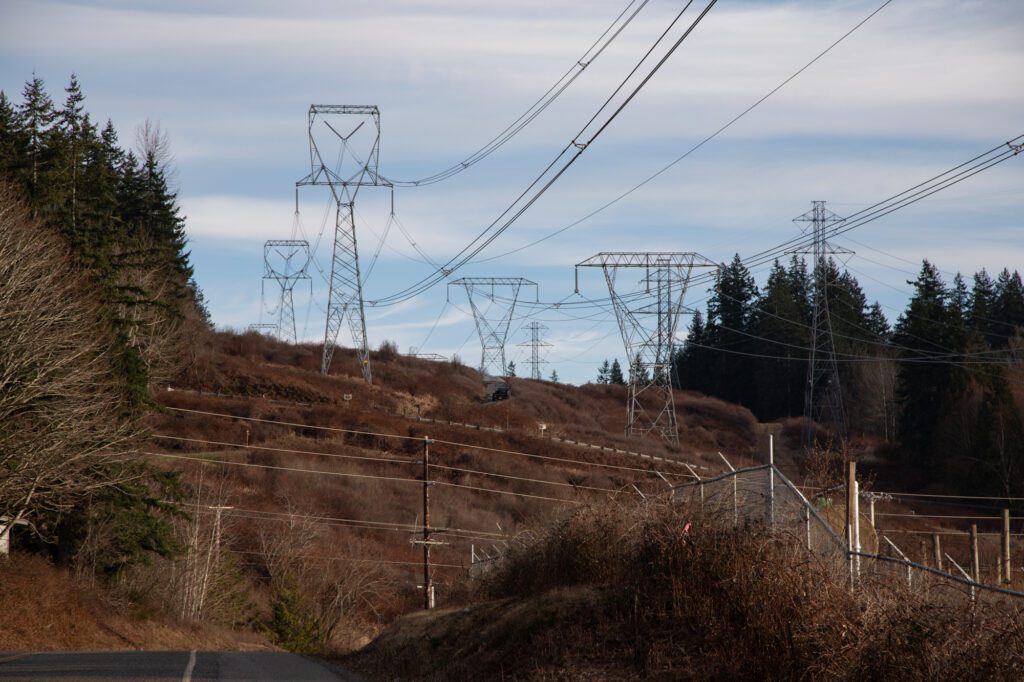
In the Pacific Northwest, a lot of that power is generated by the Bonneville Power Administration, a component of the U.S. Department of Energy charged with serving the electrical needs of Public and People’s Utility Districts, municipal electric utilities and rural electric cooperatives. Any power surplus to their needs can be marketed to other Northwest utilities or utilities in parts of the Western Interconnection south of Washington.
In addition to providing hydroelectricity from 31 federal dams across the Northwest, Bonneville Power Administration owns and operates more than 15,000 miles of high-voltage electric transmission.
Being connected to the large system allows operators to balance the needs across regions, which can see significant seasonal differences in usage.
In the Northwest, with significant amounts of hydropower, it’s possible to exchange a surplus generated by snowmelt and precipitation to California during the spring and summer.
“In the wintertime, they'll be sending power back up here to the north because we're a winter peaking area up here and they’re a summer peaking area down there,” Dagle said. “So you can have seasonal exchange of energy for everybody's benefit.”
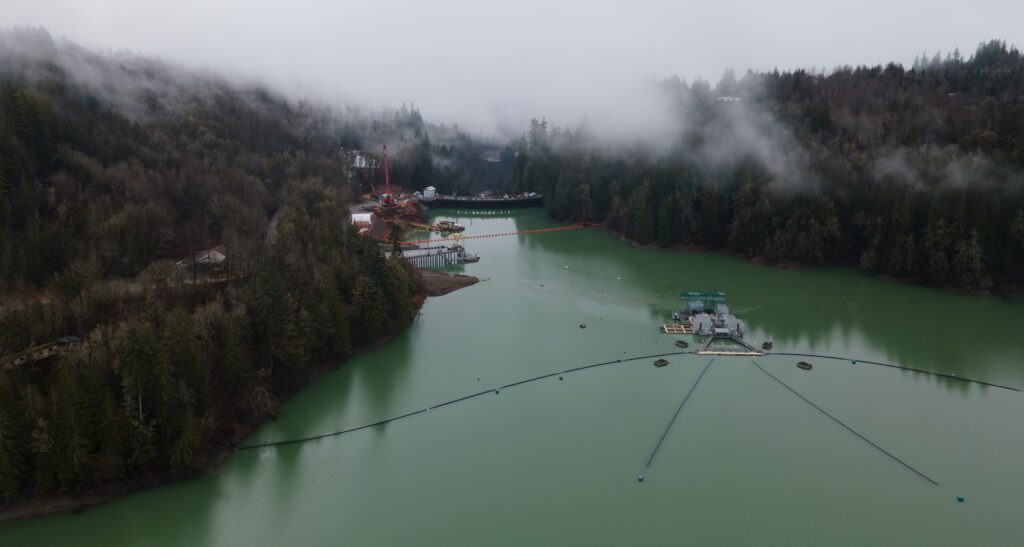
Whatcom power sources are mixed
Despite Bonneville Power Administration’s role in the Pacific Northwest, it plays a limited role in keeping the lights on in Whatcom County. The two companies that provide electricity in the county are PSE and PUD Whatcom County.
PUD Whatcom County, has one electricity customer — the Phillips 66 refinery in Ferndale. However, general manager Heimgartner said he is looking for ways for the public utility to better support the community, especially since it doesn’t pencil out to attempt to take over PSE.
Instead, the utility is considering developing geothermal or another resource to bring to market. But it’s a long road to get a project from concept to churning out power, Heimgartner said.
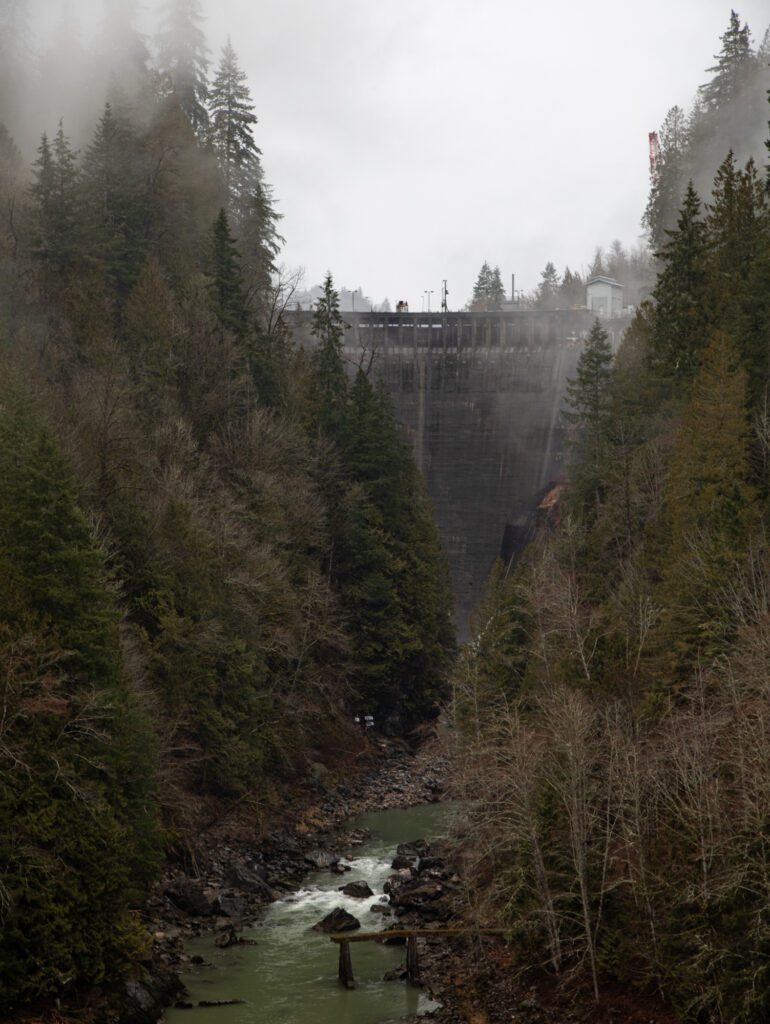
That leaves the vast majority of businesses and residents reliant on PSE, which serves about 1.1 million electric customers and nearly 840,000 natural gas customers in 10 counties.
As an investor-owned utility, PSE is responsible for its own resource acquisitions, explained David Landers, the director of system planning.
The largest producer of electricity in the utilities portfolio is hydro (27%) with coal (23%) and natural gas (23%) not far behind, based on 2022 data. Wind produces only 16% of the electricity in the system with 10% of the energy “unspecified” and nuclear, solar and others each making up less than 1%.
“By the end of 2025, we are targeting nearly 60% renewable energy in our portfolio, almost double our percentage of 34% in 2020,” Tracy said.
By 2045, all electricity sold to in-state customers must come from renewable or non-emitting sources, as mandated by the state Clean Energy Transformation Act.
This power moves through PSE's 2,600 miles of transmission lines, as well as the Bonneville’s transmission lines, to 387 substations for the voltage to be stepped down to safely flow through more than 23,000 miles of electric distribution lines owned by the utility.
Having a mix of power sources is particularly important when dealing with peak-demand events, such as this winter's cold snap.
“Gas generation facilities are very beneficial,” in that it is possible to dispatch energy from them to meet sudden increases in demand or when other resources, such as wind, are not producing as much as usual, Landers said.
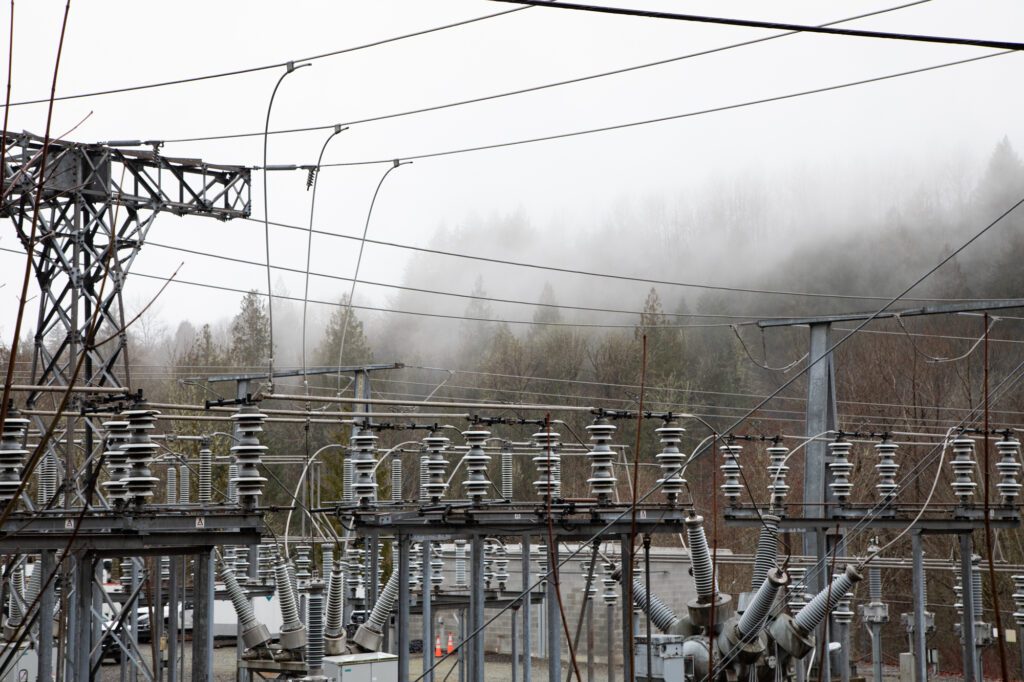
Grid faces multiple threats
Power grid stability concerns in Whatcom County reflect those faced throughout the U.S.
The consumption of electricity in the U.S. has doubled since 1985 with a predicted increase in demand of nearly 5% during the next five years, according to reports filed with the Federal Energy Regulatory Commission in 2023.
As people move toward greater dependency on electric vehicles and electric heat, demand on the system is only going to increase, Landers said.
This is especially true in Washington, which has been aggressively pursuing clean energy goals with the Clean Energy Transformation Act and the adoption of standards that will require all new passenger cars and trucks to run on zero-emission technology by 2035.
The state’s goals ultimately require the energy sector to meet the increase in demand through intermittent sources, such as wind and solar, explained Todd Myers, the environmental director at the Washington Policy Center.
“Other parts of the country are seeing less reliability and more problems with intermittency,” Myers said. “Washington is not seeing that yet, because we have hydro.”
Northwest Power and Conservation Council recently updated its assessment of grid stability, and found that Washington was doing better than previously expected because of the flexibility of the dams to meet changes in demand.
“The future though starts to get more difficult because of the ability of those dams to store water and offset the intermittency of wind and solar can only go so far,” Myers said, noting that current efforts to remove dams on the Snake River are not reasonable.
"Tearing down the Snake River dams just would make everything worse," he added.
Experts agree that there is huge potential for the continued development of renewable energy resources in Eastern Washington, but there needs to be a way to get that power to Western Washington, where demand is skyrocketing.
“You've got the load over here and no way to connect them up,” Heimgartner said, noting that any such projects likely will meet significant pushback from environmentalists and anti-development activists . “You can't get a new transmission line across the Cascades anymore.”
However, Bonneville Power Administration included the Cross Cascades North Upgrade project in its 2023 transmission plan. The project is estimated to cost $400 million and, pending environmental review, is expected to be running by 2030. If approved, it would add transmission capacity across the Cascades to ensure new resources on the east side of the region can supply electricity to load centers on the west side.
Weather extremes are concerning
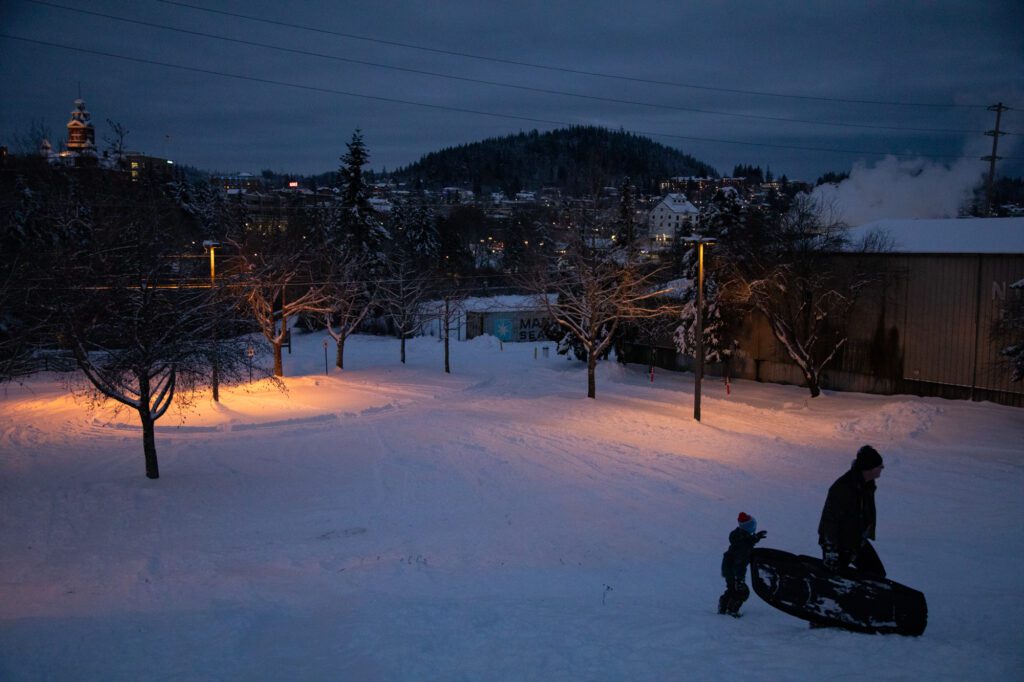
Extreme weather, which was the cause of blackouts in Whatcom County in January, is a significant threat to the grid. These events stress the system as consumption increases to either keep homes warm or cold depending on the weather.
“Also those extreme temperatures are hard on the grid equipment itself,” said Dagle, an engineer at the Pacific Northwest National Laboratory.
Unlike extreme weather conditions that usually have the largest impact on distribution lines, wildfires pose significant threats to transmission lines, which run long distances, often through less populated areas.
Concerns about wildfire impacts on the grid have grown in the last few years as Washington wildfire seasons are starting earlier and ending later.
Not only do wildfires pose a direct threat to the grid’s infrastructure from heat damage, the smoke from wildfires can cause electricity to jump from the lines to the ground, starting new fires. Because of this, utilities have to de-energize lines in affected areas to prevent them causing additional burn areas.
One other threat to the system is bad actors. PSE and Bonneville Power Administration are among utilities taking steps to strengthen security around physical threats.
The last two months of 2022 saw at least six attacks on the grid in Oregon and Western Washington, causing increased concern among law enforcement, according to Oregon Public Broadcasting.
“We've worked to harden our system even more than it was before we had our substation attacked near the Portland area in November of 2022,” Johnson said.
Bonneville Power Administration, PSE, Pacific Northwest National Laboratory and others are working toward identifying gaps in the grid and protecting against all potential threats — ultimately improving reliability.
Across the board, PSE is working toward increased reliability to reduce outages in Whatcom County, Landers said.
“We did 27 projects last year in Whatcom County at a value of about $17.8 million,” Landers said, including putting cables underground, increasing redundancy in distribution and adding tree wire covers, which help prevent lines from going down in extreme weather.
Consumers play a role
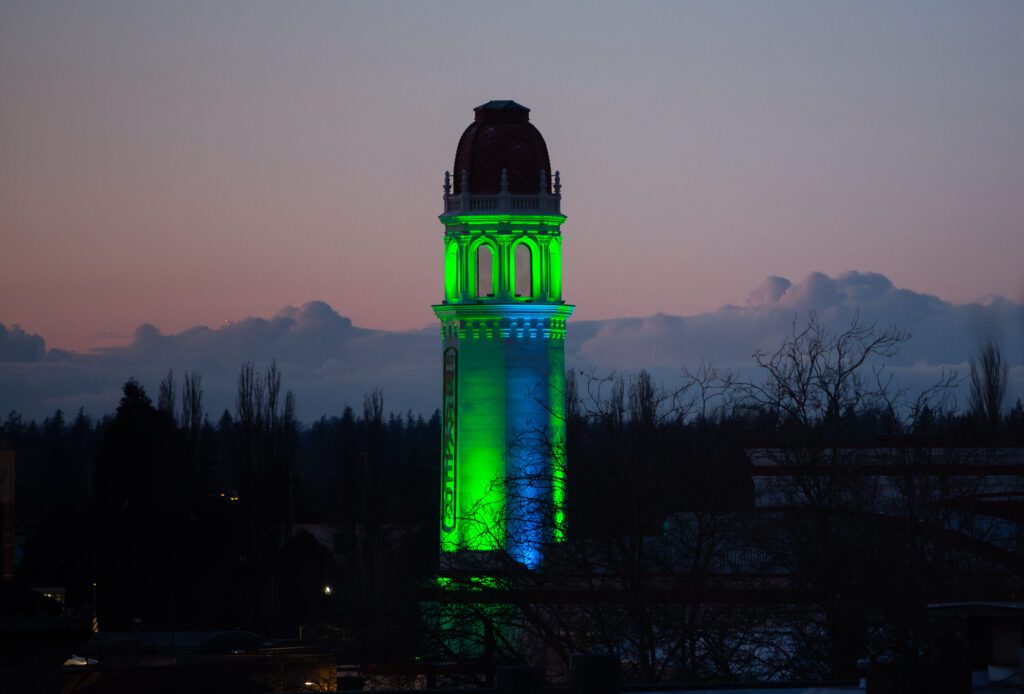
Utility companies are also asking consumers to step in and help.
One example of this is PSE's’s Flex program. This voluntary program sends participants a notification ahead of peak demand times asking for reduced energy usage. Users earn $1 per kilowatt-hour of electricity — which equates to a single dishwasher cycle — saved during the event.
This is part of a general trend Myers is seeing throughout the utility sector, as more and more companies provide real-time information to consumers to allow them to conserve energy at times when prices are extremely high.
He pointed out that conserving energy doesn’t necessarily mean turning the thermostat down to 55 degrees, but can look like not drying clothes or running the dishwasher during peak demand hours.
“If you can simply shift when you use electricity to earlier or later, rather than freezing yourself, that makes a big difference,” Myers said.
A previous version of this story incorrectly stated Chris Heimgartner's job title. The story was updated to reflect this change on March 6, 2024 at 4:07 p.m. Cascadia Daily News regrets the error.
Isaac Stone Simonelli is CDN’s enterprise/investigations reporter; reach him at isaacsimonelli@cascadiadaily.com; 360-922-3090 ext. 127.

